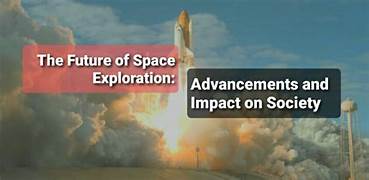Evaluating the Impact of Space Exploration on Technological Advancements
Space exploration has long been at the frontier of human ambition, seeking to push the boundaries of what is possible. From the earliest efforts to explore the moon, to the launch of rovers to distant planets, the technological advances derived from space exploration have not only reshaped our understanding of the universe but have had a profound impact on life here on Earth. These advancements have trickled down into everyday life, spurring innovations that span across industries such as medicine, communication, energy, and manufacturing. In this article, we will explore the various ways in which space exploration has influenced technological progress, and how these innovations have transformed human life.
Early Beginnings and the Space Race
The technological race to space began in earnest with the Cold War-era competition between the Soviet Union and the United States. In 1957, the USSR launched Sputnik 1, the first artificial satellite, into orbit, marking the beginning of the space age. This unprecedented achievement not only demonstrated the Soviets’ scientific capabilities but also spurred the U.S. to increase its focus on space exploration. The subsequent “Space Race” led to incredible advancements in rocket technology, electronics, and materials science, all of which had broader applications beyond the space industry.
The first manned spaceflight by Yuri Gagarin in 1961 and the Apollo moon landing in 1969 were monumental achievements that required complex technological breakthroughs. NASA’s work on spacecraft and astronaut life-support systems led to the creation of lightweight materials, more efficient propulsion systems, and advancements in computing.
Advancements in Materials Science
One of the most significant contributions of space exploration to modern technology has been in the realm of materials science. The extreme conditions of space, such as the vacuum, radiation, and wide temperature variations, necessitated the development of materials that could withstand these forces.
Memory foam, for example, was originally developed by NASA in the 1960s to improve the safety of aircraft cushions. The material, which is now commonly used in mattresses and pillows, was created to provide better pressure relief for astronauts during takeoff and landing. Similarly, insulating materials used in space suits and spacecraft have been adapted for use in home insulation and firefighting gear.
Advanced composite materials developed for space exploration, such as carbon fiber-reinforced polymers, have found their way into industries ranging from automotive design to sporting goods. These materials are both lightweight and durable, making them ideal for use in a variety of applications where strength and weight are critical factors.
Revolutionizing Communications
Space exploration has also revolutionized communication technology. The development of satellite communications has had a far-reaching impact on the way we communicate globally. The launch of early communications satellites such as Telstar 1 in 1962 laid the foundation for the global communications network we take for granted today.
Satellites have made it possible for us to communicate across continents in real-time. They are used for broadcasting television and radio signals, providing internet services in remote areas, and facilitating secure communication for military and commercial purposes. Without the advancements in satellite technology that were initially driven by space exploration, the interconnected world we live in today would not be possible.
Improving Navigation and GPS Systems
Global Positioning System (GPS) technology is another example of how space exploration has transformed modern life. Originally developed for military purposes, GPS relies on a constellation of satellites in orbit around the Earth. These satellites transmit signals that allow devices on the ground, such as smartphones and cars, to accurately determine their location.
GPS technology has had far-reaching implications, not only for everyday navigation but also for applications in agriculture, aviation, emergency response, and logistics. The ability to track assets in real-time has led to improvements in supply chain management, search and rescue operations, and disaster response efforts.
Advancements in Medical Technology
Space exploration has also contributed significantly to the advancement of medical technologies. The need to monitor and manage astronauts’ health in space led to the development of several medical innovations that have since been adapted for use on Earth.
Telemedicine is one of the most notable technologies that emerged from space research. In the 1960s, NASA developed systems to allow astronauts in space to communicate with medical professionals on Earth. Today, telemedicine is a key component of healthcare delivery, enabling patients in remote areas to consult with doctors without leaving their homes.
The development of advanced imaging technology, such as MRI and CAT scans, was also influenced by space research. NASA’s early work on space-based imaging systems to monitor the health of astronauts led to improvements in medical imaging, allowing for more accurate diagnoses and treatments of diseases such as cancer and cardiovascular conditions.
Moreover, robotic surgery and prosthetics have been significantly improved by technologies developed for space exploration. Robotic systems initially designed for use in space missions are now being used for precise and minimally invasive surgeries, while advancements in materials and design have made prosthetics more functional and affordable.
Energy Efficiency and Renewable Energy
Another area where space exploration has spurred technological advancements is energy efficiency. Space missions require power systems that are both highly reliable and efficient. This led to significant improvements in the development of solar panels, which are now a primary source of renewable energy on Earth.
The technology behind solar panels used in space missions has been adapted for use in solar energy systems here on Earth. These advancements have made solar energy more cost-effective and widely accessible, helping to reduce reliance on fossil fuels and contributing to efforts to combat climate change.
Additionally, space exploration has driven the development of energy storage systems. The need for reliable power sources for long-duration space missions has led to breakthroughs in battery technology, which have been applied to everything from electric vehicles to renewable energy storage solutions.
Advancing Computing Power
Space exploration has also played a pivotal role in the advancement of computing power. The need for more powerful and efficient computers to control spacecraft, process data from space missions, and navigate distant worlds led to the development of increasingly sophisticated computing technologies.
The first computers used for space exploration were enormous, slow, and expensive by today’s standards. However, the breakthroughs made in miniaturizing and improving the efficiency of these computers paved the way for the development of personal computers, smartphones, and other consumer electronics.
Modern computing technologies, including microprocessors, memory storage, and high-speed data transmission systems, owe much of their development to space exploration. The need to send vast amounts of data from spacecraft back to Earth has driven advances in data compression and storage technologies, which have had wide-ranging applications in industries such as entertainment, healthcare, and finance.
The Future of Space Exploration and Technological Innovation
As humanity looks toward the future of space exploration, the potential for continued technological advancements is vast. The development of artificial intelligence (AI) and machine learning for autonomous space exploration will likely lead to innovations in data processing, robotics, and decision-making, which will have applications far beyond the space industry.
Furthermore, the potential for commercial space travel and colonization of other planets could drive the development of new technologies related to life support, sustainable energy, and resource utilization. As private companies and governments invest more in space exploration, it is likely that we will see continued breakthroughs that benefit both humanity’s ability to explore space and our quality of life here on Earth.
Conclusion
Space exploration has been a driving force behind numerous technological advancements that have changed the course of human history. From materials science and communications to medicine and energy, the technologies developed for space missions have permeated every aspect of modern life. As we continue to push the boundaries of what is possible in space, the innovations that emerge from these efforts will continue to shape the future of technology on Earth. The impact of space exploration on technological advancements is not just a testament to human ingenuity but a reminder of the interconnectedness of science, technology, and society. The journey to the stars may lead us to even greater innovations, changing the world in ways we can only begin to imagine.


